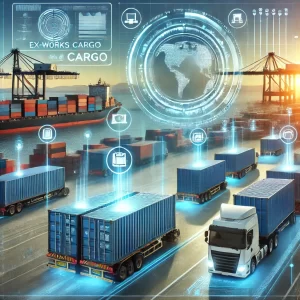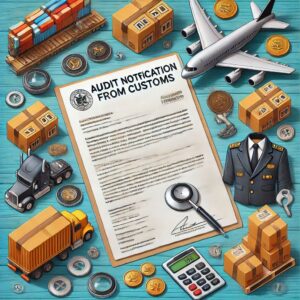If you’re an exhibitor looking to expand your reach internationally, participating in exhibitions abroad can be an excellent opportunity to showcase your products or services to a global audience. However, venturing into international exhibitions comes with its own set of challenges, one of which is dealing with freight forwarding. In this article, we’ll provide you with some valuable tips on joining exhibitions abroad and the advantages of working with a freight forwarder.
Advantage in joining exhibitions abroad.
Participating in exhibitions abroad yields numerous benefits. It offers global exposure, broadening your brand’s reach to diverse international audiences and potential customers across different regions. Additionally, it facilitates market expansion, enabling the exploration of new markets beyond domestic borders, and fostering business growth opportunities. These exhibitions also provide invaluable networking opportunities, connecting you with industry professionals, potential partners, and customers worldwide.
Moreover, they enhance brand visibility and credibility on a global scale, positioning your company as a prominent industry player. Furthermore, exhibitions abroad serve as platforms to showcase products or services, demonstrating their features, benefits, and competitive advantages to a varied audience. They also facilitate market research efforts, providing insights into international market trends, customer preferences, and competitor strategies. Finally, these events aid in business development endeavors, supporting lead generation, sales meetings, and partnership discussions, thus fostering expansion and exploration of new avenues for growth.
Tips for Joining Exhibitions Abroad:
Do Your Research: Before committing to an international exhibition, thoroughly research the event, its target audience, and the reputation of the organizers. Look into past editions of the exhibition to gauge its success and relevance to your business.
Plan Well in Advance: International exhibitions require careful planning due to logistical challenges. Start planning at least six months to a year in advance to secure booth space, arrange travel and accommodation, and handle shipping logistics.
Understand Customs and Regulations: Familiarize yourself with the customs regulations and import/export requirements of the host country. Failure to comply with these regulations can result in delays or even fines.
Prepare Your Marketing Materials: Ensure that your marketing materials, including brochures, banners, and product samples, are professionally designed and translated into the local language if necessary. Tailor your messaging to resonate with the cultural preferences of the target market.
Network Strategically: Take advantage of networking opportunities before, during, and after the exhibition to connect with potential customers, partners, and industry influencers. Be proactive in initiating conversations and exchanging contact information.
Follow Up After the Exhibition: The work doesn’t end when the exhibition is over. Follow up with leads promptly, send thank-you emails, and nurture relationships with potential clients to convert leads into sales.
Subscribe to the Ex-works24/7 newsletter
Advantages of Dealing with a Freight Forwarder:
Expertise and Experience: Freight forwarders specialize in managing the logistics of international shipping. They have the expertise and experience to navigate complex customs procedures, select the most cost-effective shipping routes, and ensure timely delivery of your exhibition materials.
Customized Solutions: Freight forwarders offer customized shipping solutions tailored to your specific needs and budget. Whether you’re shipping small packages or large exhibition booths, they can recommend the most efficient transportation mode, whether by air, sea, or land.
Risk Mitigation: International shipping involves inherent risks, such as delays, damage, or loss of cargo. Freight forwarders help mitigate these risks by providing insurance options and implementing robust tracking and monitoring systems to keep you informed every step of the way.
Save Time and Resources: Outsourcing your shipping logistics to a freight forwarder frees up your time and resources, allowing you to focus on other aspects of preparing for the exhibition, such as booth design, marketing, and lead generation.
Global Network: Freight forwarders have a global network of partners and agents, enabling them to provide seamless door-to-door service to virtually any destination worldwide. This network ensures that your exhibition materials reach their destination safely and on time, regardless of the location.
In conclusion, participating in exhibitions abroad can open up new opportunities for business growth and expansion. By following these tips and leveraging the expertise of a reputable freight forwarder, you can overcome the logistical challenges associated with international exhibitions and maximize your chances of success on the global stage. Good luck!
Frequently
Asked Questions
- Research the exhibition in advance: Familiarize yourself with the theme, featured artists, or exhibits. Many major exhibitions provide online resources, brochures, or virtual previews. This allows you to plan which sections or artists you'd like to focus on.
- Book tickets early: For popular exhibitions, it's a good idea to book tickets ahead of time to avoid long lines or sell-outs. Some exhibitions also offer timed entry to manage crowd flow, so securing a spot early helps with smoother access.
- Check opening times and any special events: Many exhibitions host special talks, workshops, or guided tours. Knowing the schedule in advance can help you make the most of your visit.
- Language and cultural preparation: If you're visiting a country where a different language is spoken, it might help to learn some basic phrases or download a translation app. Also, familiarize yourself with local customs and etiquette to ensure you're respectful of the cultural context.
- Plan your route: Large exhibitions can feel overwhelming, so it's useful to plan your visit. Focus on the sections or artists you're most interested in and set a reasonable amount of time for each.
- Arrive early or late: If possible, visit during off-peak hours (early mornings or late afternoons) to avoid the largest crowds. Mid-week days often see fewer visitors than weekends.
- Take breaks: Give yourself time to rest and reflect between exhibits. Many large exhibitions offer areas for sitting, which can help reduce fatigue and prevent you from feeling rushed.
- Use a map or app: Many exhibitions provide maps or smartphone apps to help visitors navigate. If available, download the exhibition app for additional information about each section or artist, as well as interactive features.
- Take a guided tour: Many exhibitions offer guided tours or audio guides, which can provide deeper insights into the artworks, history, and concepts behind the exhibits. Audio guides are often available in multiple languages.
- Attend lectures, talks, or workshops: Many exhibitions have accompanying programs, such as artist talks, panel discussions, or workshops. These are great opportunities to engage more deeply with the subject matter and ask questions.
- Read the labels and wall texts: Exhibition curators often include detailed descriptions or interpretive texts alongside the works. These can provide context and enhance your understanding of the pieces on display.
- Take notes or photos (if allowed): If you're interested in learning more about specific works, consider jotting down notes or taking photos (where permitted) for further research later.
- Comfortable shoes: Exhibitions, especially large ones, can involve a lot of walking. Comfortable, supportive footwear is essential for a more enjoyable experience.
- Portable charger: If you're using your phone for navigation, photos, or taking notes, a portable charger will ensure you don’t run out of battery halfway through your visit.
- Notebook and pen: If you like taking notes or sketching, bring a small notebook and pen to capture your thoughts or impressions of the exhibits.
- Water and snacks: While many exhibitions have cafes or snack bars, it's always a good idea to bring water and light snacks, especially if you'll be spending several hours at the exhibition.
- Travel essentials: Ensure you have any necessary documents (tickets, passport, ID), as well as any local currency or payment methods you'll need for purchases or entry fees.
- Respect local customs and etiquette: Different countries may have different rules for photography, behavior, and dress code at exhibitions. In some countries, photography may be prohibited in certain areas, while in others, it's encouraged. Always respect these rules and be mindful of your surroundings.
- Quiet and respectful behavior: While attending exhibitions, especially in cultural or religious sites, maintain a respectful level of quietness. Avoid loud conversations and be mindful of others who may be seeking a contemplative experience.
- Engage with local culture: Take the opportunity to learn about local art and culture through the exhibition. Be open to seeing things from a different perspective, and if available, ask the curators or guides about the cultural significance of certain works.
- Tipping and service: If you use services like a guided tour, café, or shop, familiarize yourself with local tipping customs. Tipping practices vary from country to country, and it’s helpful to know what’s expected.




